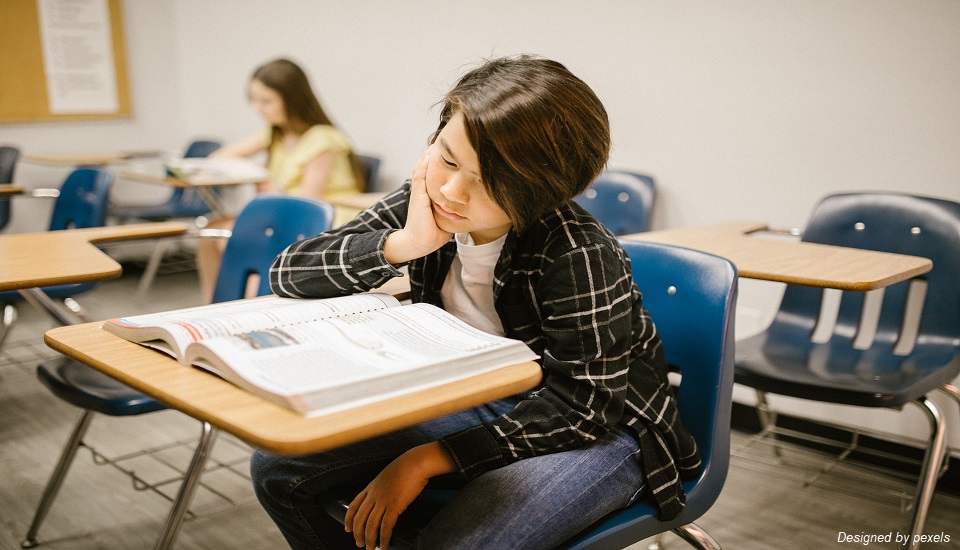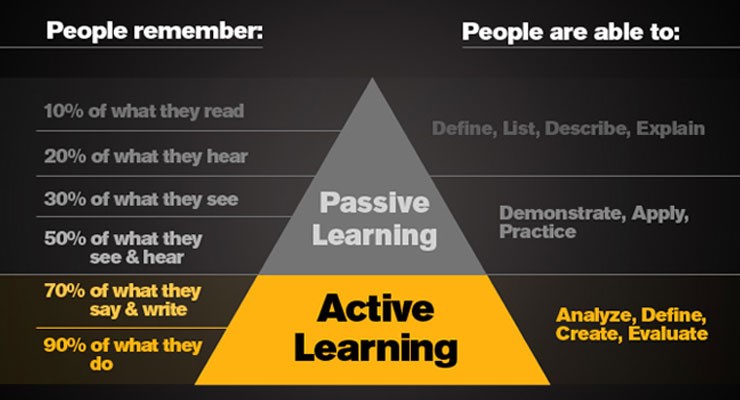The Power of Passive Consumption: How Teachers Can Help Students Learn More Effectively
30th March 2023

The traditional model of education has always been about active learning, students actively engaging with their teachers through lectures, discussions, and assignments. But what if we told you that there's another way of learning that's just as effective, if not more so? It's called Passive consumption, and it's a powerful tool that teachers can use to help their students learn more effectively.
Passive consumption refers to the process of absorbing information without actively engaging with it, such as watching educational videos or reading books. By incorporating passive consumption into their teaching strategies, teachers can help their students retain more information, improve their critical thinking skills, and even boost their creativity.
In this blog, we'll explore the power of passive consumption and how teachers can harness it to create a more engaging and effective learning experience for their students.
Note: If you’re looking to enhance your teaching skills by learning new modern teaching techniques then we do recommend you to go through our Professional Doctorate in Education course, which will definitely help you.
What is Passive Consumption for Learners?
Passive consumption is the process of absorbing information without actively engaging with it. Students can passively consume information through various means, including watching educational videos, listening to lectures, or reading books. Passive consumption is different from active learning, which involves students actively engaging with the material through discussions, assignments, and other interactive activities.
Passive consumption can be an effective way for students to learn new information or reinforce previously learned concepts. By listening to an expert in the field, watching a demonstration, or reading about a topic, students can gain a deeper understanding of the subject matter.
However, passive consumption should not be the only method of learning. Active learning is still crucial for students to develop critical thinking skills, engage with their peers, and apply their knowledge to real-world situations. A balance between passive consumption and active learning is the key to an effective learning experience.
Knowledge Activism vs Passive Consumption
Knowledge activism is an approach to learning that emphasizes active engagement with the material. Knowledge activists are proactive learners who seek out new information, ask questions and challenge their own assumptions. They are not content to passively consume information but actively engage with it to develop a deeper understanding of the subject matter.

Passive consumption, on the other hand, is a more passive approach to learning. It involves absorbing information without actively engaging with it. While passive consumption can be an effective way to learn new information, it is not sufficient on its own. Students need to actively engage with the material to develop critical thinking skills, apply their knowledge to real-world situations, and engage with their peers.
Passive Consumption in the Classroom
Passive consumption can be a valuable tool for teachers to help their students learn more effectively. By incorporating passive consumption into their teaching strategies, teachers can help their students retain more information, improve their critical thinking skills, and even boost their creativity.
There are many ways that teachers can incorporate passive consumption into their lesson plans. For example, they can assign reading materials or educational videos for students to watch outside of class. In class, teachers can use lectures, presentations, or demonstrations to help students passively consume information.
Passive consumption can also be used as a tool to introduce new topics or reinforce previously learned concepts. By providing students with a foundation of knowledge, teachers can then use active learning strategies to help students develop critical thinking skills and apply their knowledge to real-world situations.
Examples of Passive Consumption Activities
There are many ways that teachers can incorporate passive consumption into their lesson plans. Here are some examples:
- Assigning reading materials for students to read outside of class
- Assigning educational videos for students to watch outside of class
- Using lectures, presentations, or demonstrations to introduce new topics or reinforce previously learned concepts
- Providing students with summaries of important information to review before exams
- Using podcasts or audio recordings to help students passively consume information
How to Incorporate Passive Consumption into Lesson Plans?
Here are some tips for incorporating passive consumption into your lesson plans:
- Determine the learning objectives for the lesson, and identify which parts of the material can be presented passively.
- Select the appropriate passive consumption activities to support your learning objectives.
- Integrate the passive consumption activities into your lesson plan, making sure to provide context and background information.
- Provide opportunities for students to engage with the material actively, such as through group discussions, assignments, or projects.
By incorporating passive consumption into your lesson plans, you can help your students retain more information, improve their critical thinking skills, and even boost their creativity.
Benefits of Passive Consumption for Learning
Passive consumption can be an effective way for students to learn new information or reinforce previously learned concepts. Here are some of the benefits of passive consumption:
- Helps students retain information: When students passively consume information, they are more likely to retain it than if they were to actively engage with it.
- Saves time: Passive consumption can be a more efficient way for students to learn new information, as it requires less time and effort than active engagement.
- Improves critical thinking skills: Passive consumption can help students develop critical thinking skills by providing them with a foundation of knowledge that they can then apply to real-world situations.
- Boosts creativity: Passive consumption can inspire students and spark their creativity by exposing them to new ideas and perspectives.
Challenges and Limitations of Passive Consumption
While passive consumption can be an effective way for students to learn new information, it is not without its challenges and limitations. Here are some of the challenges and limitations of passive consumption:
- Limited engagement: Passive consumption does not provide students with opportunities for active engagement, which can limit their ability to develop critical thinking skills and apply their knowledge to real-world situations.
- Limited retention: While passive consumption can help students retain information, it is not as effective as active engagement at promoting long-term retention.
- Passive consumption can be boring: Students may find passive consumption activities, such as lectures or reading assignments, boring and unengaging.
- Passive consumption may not be accessible to all students: Not all students have access to the technology or resources needed to engage in passive consumption activities, such as watching educational videos or listening to podcasts.
Tips for Effective Use of Passive Consumption
Here are some tips for effectively using passive consumption in the classroom:
- Provide context and background information: When using passive consumption activities, make sure to provide context and background information to help students understand the material.
- Encourage active engagement: Passive consumption should be used in conjunction with active engagement activities, such as group discussions, assignments, or projects.
- Use a variety of passive consumption activities: To keep students engaged, use a variety of passive consumption activities, such as videos, podcasts, or readings.
- Make sure passive consumption is accessible to all students: Provide alternative resources for students who may not have access to the technology or resources needed to engage in passive consumption activities.
Passive Consumption Resources for Teachers
There are many resources available to teachers to help them incorporate passive consumption into their lesson plans. Here are some examples:
- Khan Academy: Khan Academy provides a wide range of educational videos on various subjects.
- TED Talks: TED Talks are a great resource for educational videos on a variety of topics.
- Podcasts: There are many educational podcasts available on various subjects.
- Open educational resources (OERs): OERs are free, openly licensed educational materials that can be used for teaching and learning.
Passive Consumption method can be beneficial:
Passive consumption can be a powerful tool for teachers to help their students learn more effectively. By incorporating passive consumption into their teaching strategies, teachers can help their students retain more information, improve their critical thinking skills, and even boost their creativity.
However, passive consumption should not be the only method of learning. Active learning is still crucial for students to develop critical thinking skills, engage with their peers, and apply their knowledge to real-world situations. By finding a balance between passive consumption and active learning, teachers can create a more engaging and effective learning experience for their students.
In case, if you are an experienced teacher who wants to up-skill your teaching skills then we do recommend our Professional Doctorate in Education course which will definitely help you in your upgrading journey.
